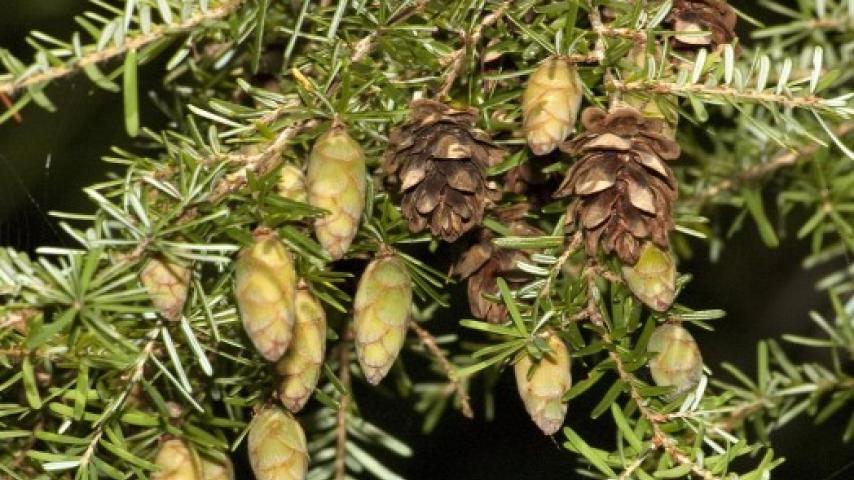Western Hemlock (Tsuga heterophylla)
This is the dominant tree species of old-growth conifer forests in the Pacific Northwest. The ability of the seedlings to grow in deep shade allows the species to persist through cycle after cycle of birth, growth, decay, and death of the same species.

KINGDOM Plantae - PHYLUM Coniferophyta - CLASS Pinopsida - ORDER Pinales - FAMILY Pinaceae
Western Hemlock will grow only on organic soils, so hemlock forests are not begun on newly created soils or those scraped clean by floods or glaciers. Many other species colonize these habitats, and the organic material created by the decay or those plants and animals that do so eventually leads the soil to a point at which the first hemlocks colonize. Once these late-succession forests reach maturity, hemlocks dominate.
Western Hemlocks can grow 60 meters tall during their long life. They are easily recognized in the field by the drooping leader, the tip of the tree. All of the other conifers with similar needles have a stiffer, straight-up leader. The needles are quite small, 5-20 mm in length. They are flattened, blunt, unequal in size, and rather irregularly spaced compared with those of true firs and Douglas-firs.
The tall, straight trunks have bark that is striped with vertical furrows, the striping finer than that of the Douglas-firs that may be growing next to them. The female cones are small, about 2 cm in length, with prominent scales that are purplish-green when young and light brown when mature. They are much smaller than Douglas-fir cones and larger than the few-scaled Western Red Cedar cones.
Western Hemlock is an important tree in the timber industry, and its cambium and needles have served as food for native cultures. In Alaska, the boughs are placed in the water when herring are spawning, and the needles give the resulting egg dishes a distinctive taste.

